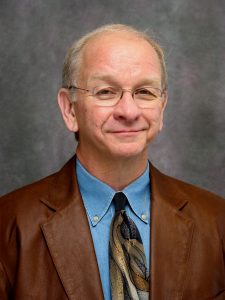Dr. Chester Watson
Emeritus Professor
 Dr. Watson has practical experience as an engineer working in coal-fired steam generation electric power plants, as a utilities construction manager, in the design and survey for major river projects such as docks, pipeline crossings, mined land reclamation, and channel stabilization measures. He conducted approximately 25 floodplain information and flood insurance studies for the U.S. Army Corps of Engineers and FEMA. He was also in charge of numerous Hydrologic, Hydraulic, and Geomorphic studies for the Vicksburg, Mobile, Sacramento, and Memphis Districts of the U.S. Army Corps of Engineers. Dr. Watson has been a reviewer of mine reclamation plans for the Nuclear Regulatory Commission, specializing in hydraulic and geomorphologic related hazards. He also served as Principal Investigator for research projects involving erosional stability of watershed and stream systems, effectiveness of manufactured stream stabilization products, and river and stream restoration projects. Dr. Watson has practical experience as an engineer working in coal-fired steam generation electric power plants, as a utilities construction manager, in the design and survey for major river projects such as docks, pipeline crossings, mined land reclamation, and channel stabilization measures. He conducted approximately 25 floodplain information and flood insurance studies for the U.S. Army Corps of Engineers and FEMA. He was also in charge of numerous Hydrologic, Hydraulic, and Geomorphic studies for the Vicksburg, Mobile, Sacramento, and Memphis Districts of the U.S. Army Corps of Engineers. Dr. Watson has been a reviewer of mine reclamation plans for the Nuclear Regulatory Commission, specializing in hydraulic and geomorphologic related hazards. He also served as Principal Investigator for research projects involving erosional stability of watershed and stream systems, effectiveness of manufactured stream stabilization products, and river and stream restoration projects.
Technically, his emphasis has been on the analysis of watershed and channel system instability. He has given seminars to personnel of the Soil Conservation Service and Corps of Engineers incorporating geomorphic and hydraulic concepts. He has co-authored text books and has written chapters for other texts. Dr. Watson has conducted the geomorphology portions of the Waterways Experiment Station channel stabilization seminar, channel rehabilitation seminars for the U.S. EPA, and stream bank stabilization for IECA. He has been involved in a major research effort for Waterways Experiment Station, U.S. Army Corps of Engineers to develop methods for rehabilitation of streams that have been destabilized due to land-use change and channelization. This project, the Demonstration Erosion Control project, is a long-term, comprehensive effort to control erosion and channel degradation. Numerous full-channel grade control structure, side-channel drop pipes, riprap bank stabilization, and bioengineering projects have been constructed. Dr. Watson was in charge of a group that intensively monitors the performance of the constructed features and the response of the channel to the emplaced features. Working with Waterways Experiment Station personnel and other participating groups, Dr. Watson has developed design, monitoring, and evaluation tools for channel stabilization. He has also participated in the development and testing of procedures that will include physical habitat features as a component of the channel stabilization design. Other research includes development of guidelines for channel rehabilitation that will improve habitat value and maximize the natural reaeration capacity of the stream. Based on the natural reaeration capacity of the streams, Dr. Watson has conducted intensive physical model simulation of weir overfalls that could be used to improve the water quality of streams. Mathematical modeling has also been applied to assess the effect of using a stable channel morphology to improve a stream that was degraded by gravel dredging. Dr. Watson’s primary teaching emphasis at Colorado State University was in Environmental River Mechanics (CE413). Research activities have provided funding for numerous graduate students. Dr. Watson has been a member of the Larimer County Floodplain Review Board as a volunteer service to the community. Research Interests
Links to Other Information
|
Education
|